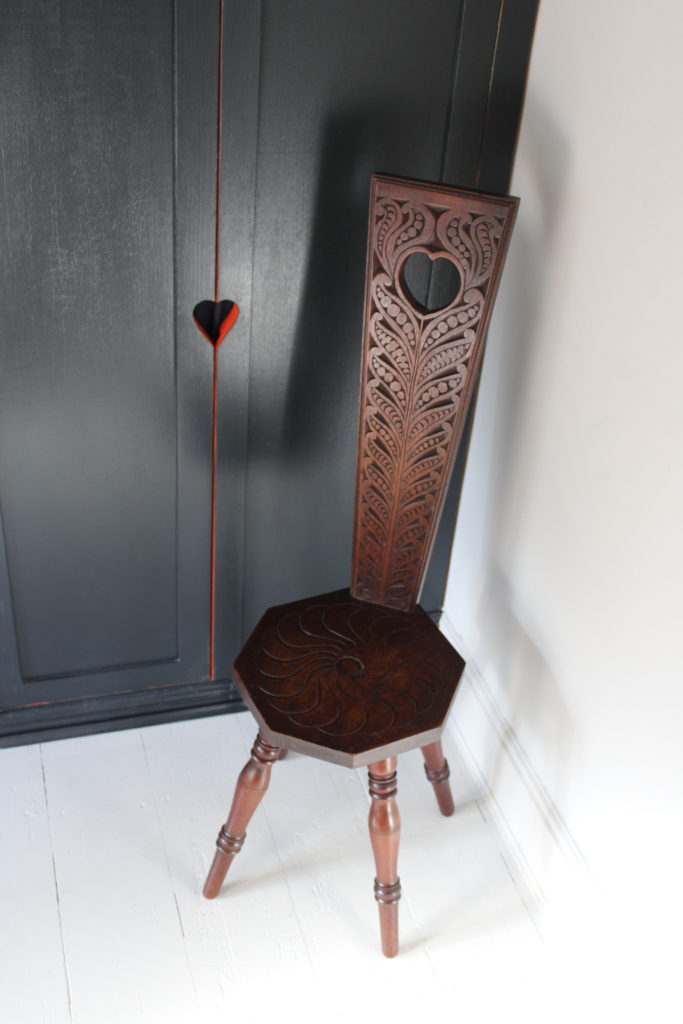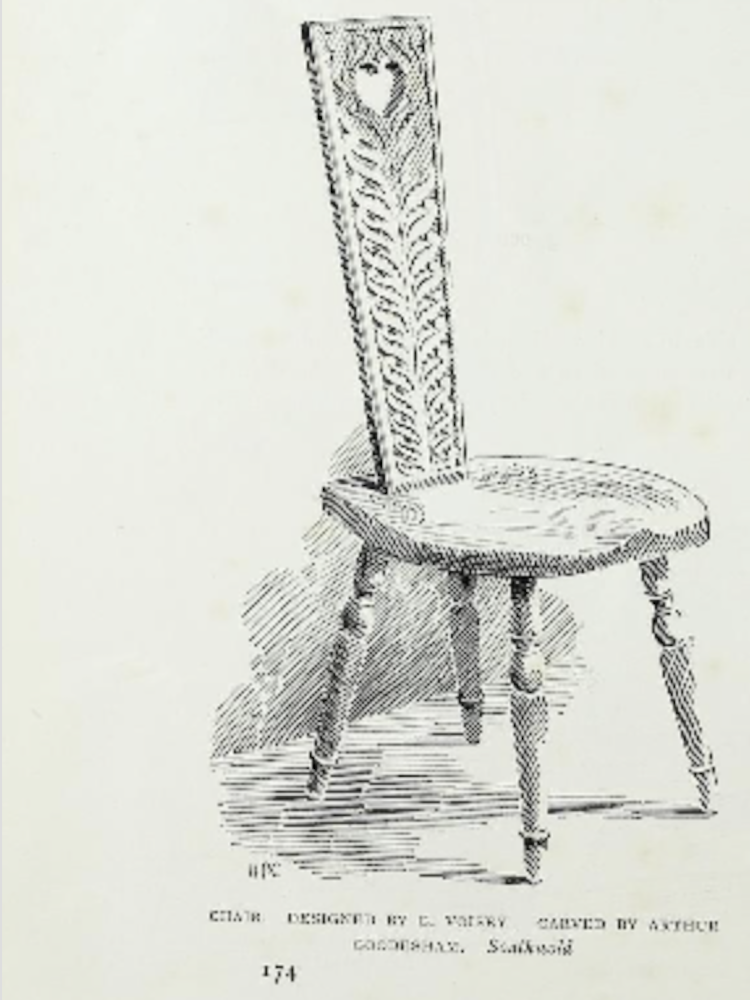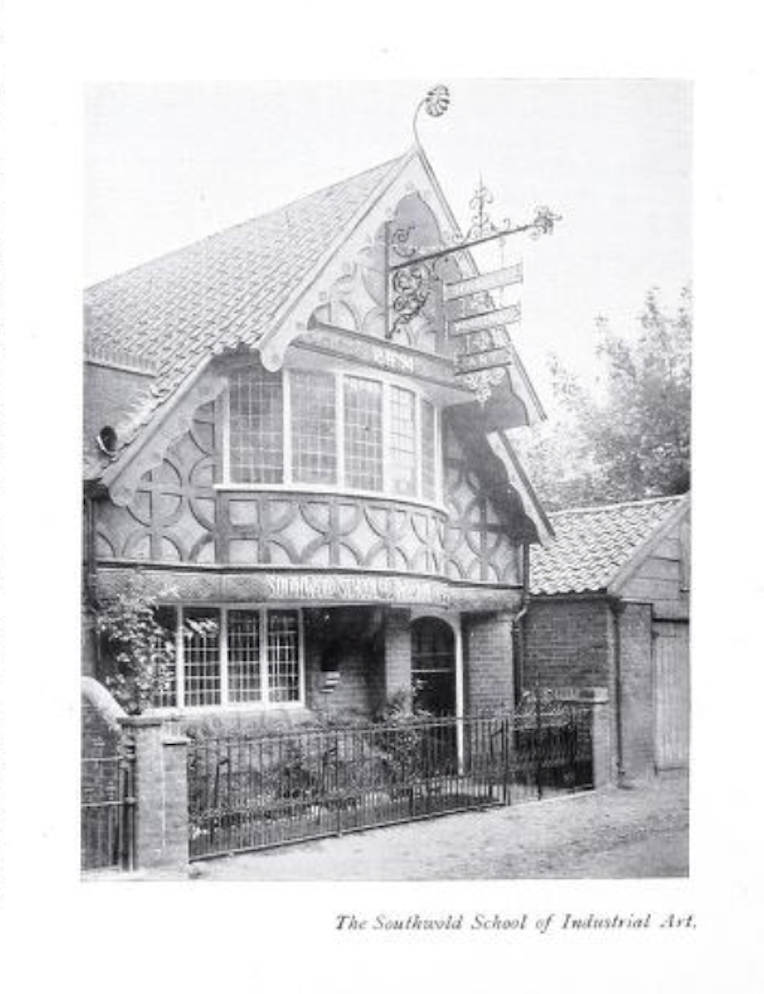Southwold School of Industrial Arts chair
Oak spinning chairs are not that uncommon and I have watched many come at go over the years. However I recognised the design of the back of this chair from an image I had seen in The Studio. After a quick search I found the relevant image. Illustrated in The Studio, Vol 5. 1895.
Simply illustrated as a chair designed by G. Voisey and made by Arthur Gooderham, Southwold. The chair appears in the coverage of the 1895 Annual Home Arts and Industries exhibition and it is aptly described as “notably good”.
This led to some more research to see what I could find out about this Southwold organisation. Thankfully there are a few references that helped me learn more about the Southwold School of Industrial Art.
Like many other classes, the Southwold School was started was started by a wealthy benefactor, Arthur Flower. Arthur was a magistrate based in London. He was a summer visitor to Southwold, staying at Southwold house with his family in around 1892. He was well connected, his brother being Lord Battersea who had married into the Rothschild family. This is possibly how Arthur became aware of the Home Arts and Industries because the Rothschild’s were involved in classes at their estate in Buckinghamshire.


Arthur had observed that young local men and those in the local fishing industry often had very little to occupy their time, particularly in the winter. He initially set up a small class and supplied an instructor, Miss Plunket. The class was popular and in 1894 a purpose built studio was built in Park Lane. To the best of my knowledge this building still exists today in Southwold with it’s stunning mock tudor façade and the schools monogram. Miss Plunkett had retired and the new instructor and manager of the school was George Voisey, the designer of our chair.
The School started to exhibit with great success at the annual Home Arts and Industries Exhbitions held in London. By 1895 membership at the school had grown to over 70 boys and men. Profits from sales were shared and in good Arts and Crafts tradition, the successful workers were encouraged to use the proceeds to gradually buy their own tools. Throughout the 1890’s the school continued to make a good income from the exhibition sales and they won numerous awards. Even the royal family, including the then Princess of Wales, made purchases and placed orders when visiting the HAIA exhibitions.
Only a few pieces were illustrated in The Studio and as pieces were unmarked a lot of the history and provenance of the schools furniture has been lost. Like many other classes and schools, the first world war ended the whole venture.
This is at least one piece that we can safely attribute to the school.
